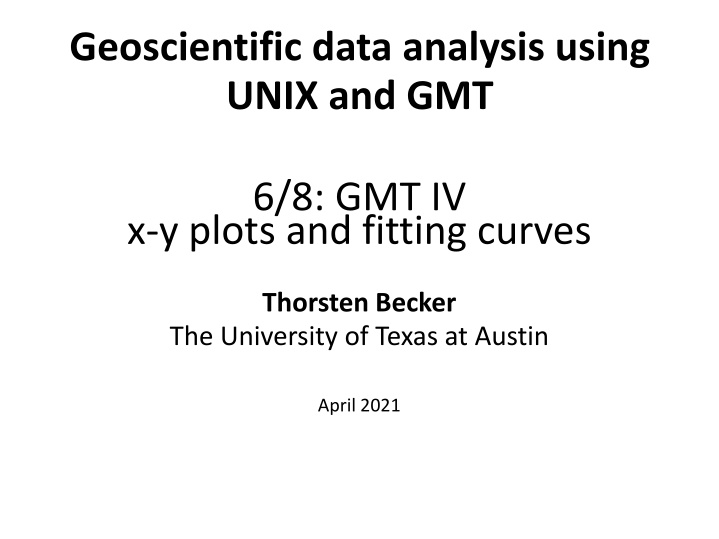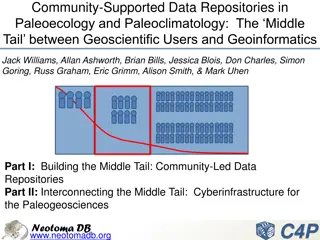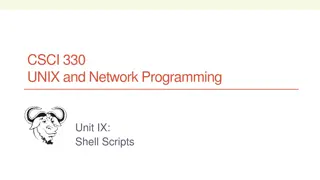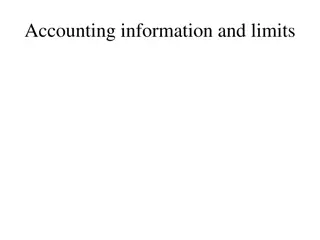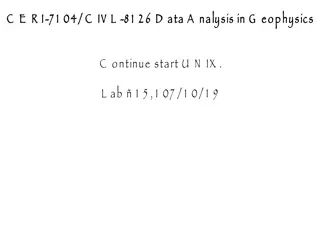Geoscientific Data Analysis Using Unix and GMT: Practical Methods and Techniques
Explore techniques for analyzing geoscientific data using Unix and GMT, including handling irregularly spaced data, fitting curves, processing noisy data, and utilizing filtering methods. Learn about spline usage, polynomial fitting, correlation coefficients, and Gnuplot functionalities.
Download Presentation

Please find below an Image/Link to download the presentation.
The content on the website is provided AS IS for your information and personal use only. It may not be sold, licensed, or shared on other websites without obtaining consent from the author.If you encounter any issues during the download, it is possible that the publisher has removed the file from their server.
You are allowed to download the files provided on this website for personal or commercial use, subject to the condition that they are used lawfully. All files are the property of their respective owners.
The content on the website is provided AS IS for your information and personal use only. It may not be sold, licensed, or shared on other websites without obtaining consent from the author.
E N D
Presentation Transcript
Geoscientific data analysis using UNIX and GMT 6/8: GMT IV x-y plots and fitting curves Thorsten Becker The University of Texas at Austin April 2021
What to do with rough/irregularly spaced data?
Note curve outside data range -> use symbols and lines
Fitting a polynomial always plot the residual
Pearson (linear) correlation coefficient Correlation Spearman rank correlation
No class next Thursday Friday is on Paraview 3-D visualization and other topics
